On Monday, December 9, as part of the Citizen Science project, we visited Julia’s farm, a member of Minka, where we shared observations on the development of various tomato varieties she is growing. These varieties are part of the collection of heirloom tomatoes rescued by the Genetics Department at the School of Agronomy of the University of Buenos Aires and linked to the project “Rescuing the Heirloom Tomato.”
In addition, Julia cultivates around 10 of her own varieties, which she has collected and preserved over the years. We also evaluated these varieties!
The day began with a visit to the orchard area, where the 30 citrus trees she planted this season are growing very well. In a few years, she will have a significant fruit production to add to the diversity of her farm.
We then moved on to the greenhouse where the tomatoes are transplanted. This greenhouse had been destroyed by severe storms in early 2024 and, thanks to the joint efforts of Bioleft and Minka, it was repaired and made ready for this growing season. Julia told us that, at this time of year, she starts working inside the greenhouse very early because the heat becomes much more intense and makes the tasks more difficult. Right now, they are installing irrigation hoses over raised beds where peppers will later be transplanted.
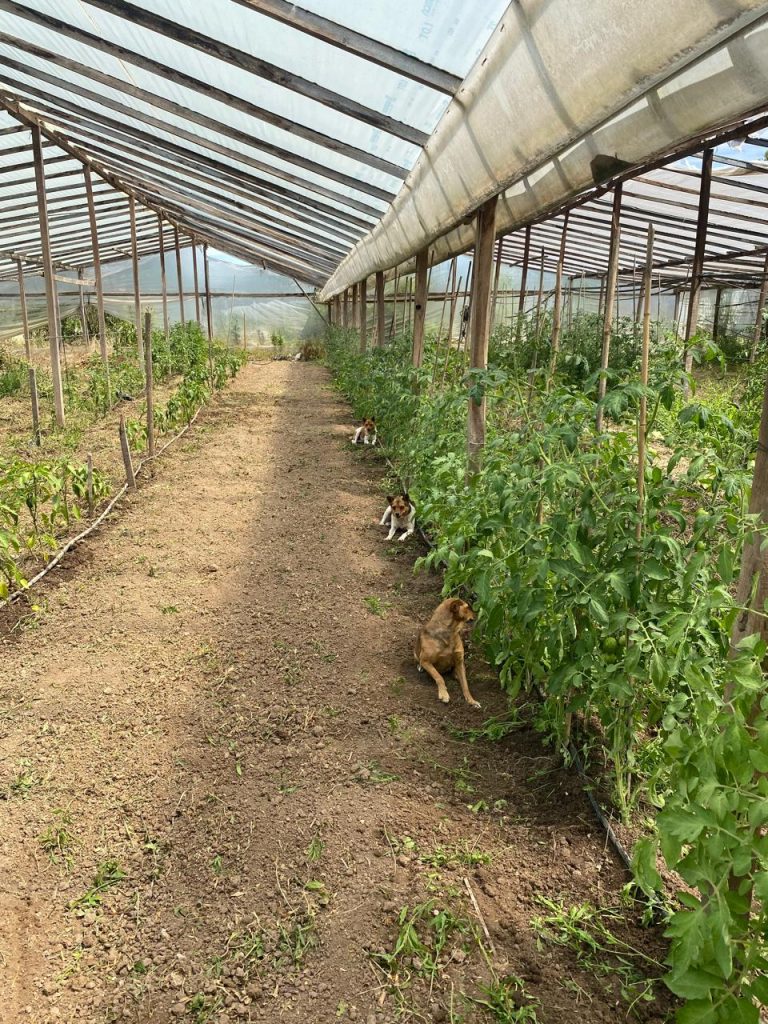
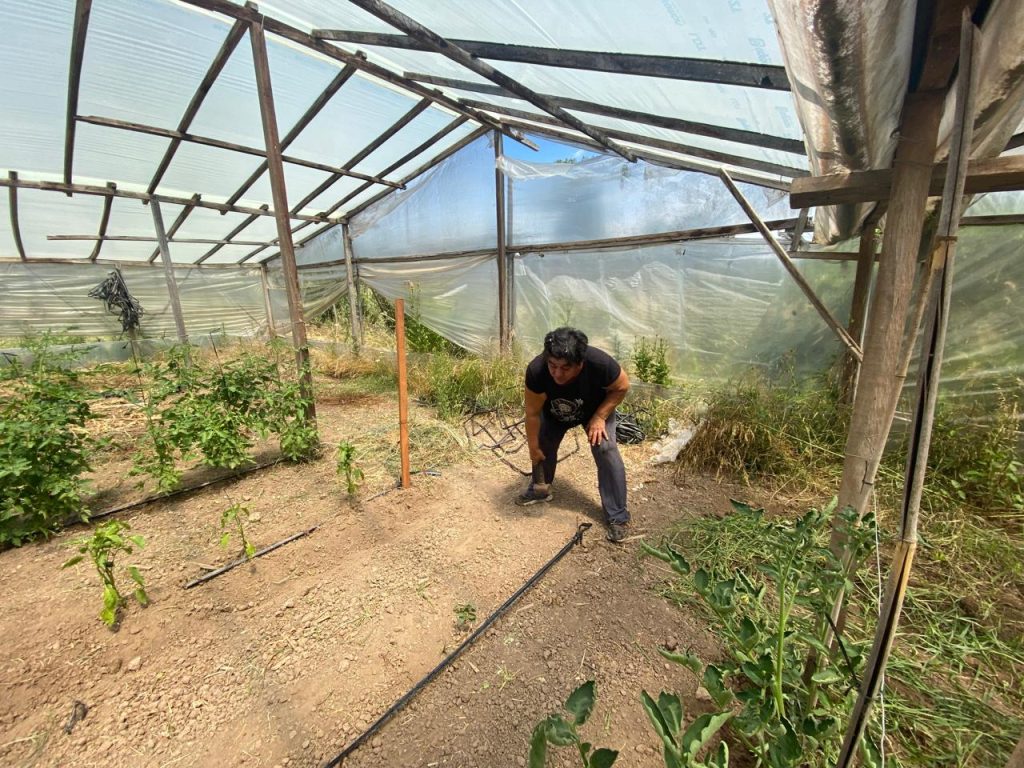
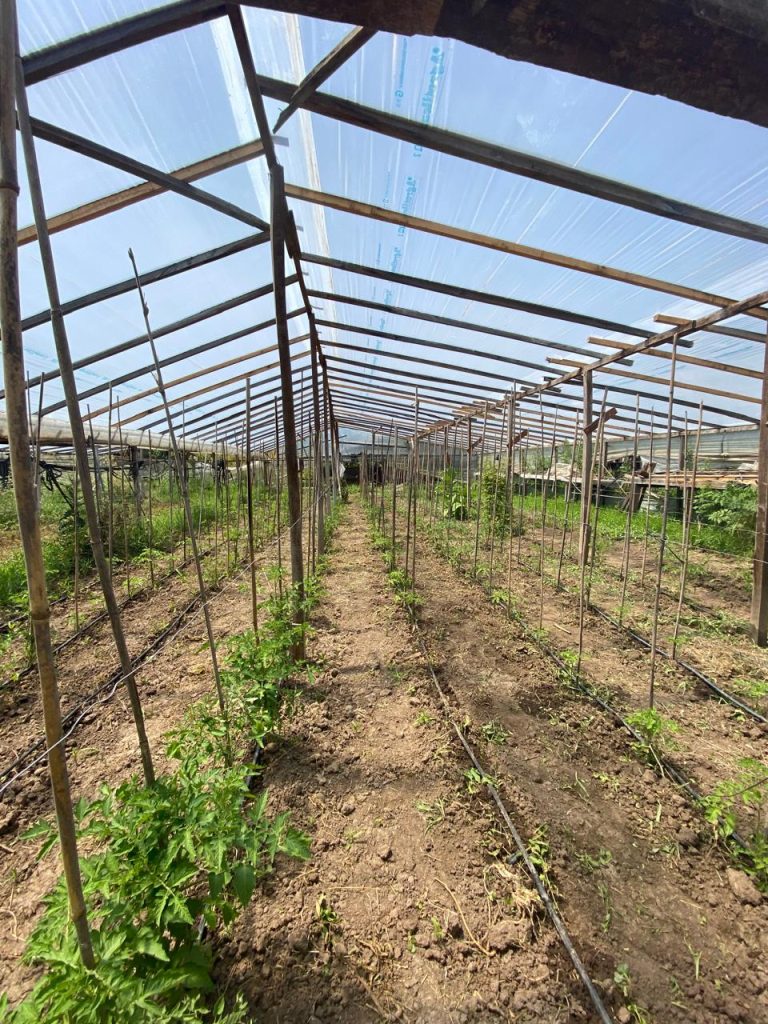
During the visit, we observed the plant development, including height and foliage, as well as the development of flowers and fruits, which have already started to be harvested. We also monitored the presence of pests and diseases, which tend to appear more frequently at this time of year.
Thanks to Julia’s hard work and dedication, all the tomato plants are very well established. They look vigorous and healthy. Julia has been performing axillary pruning to regulate the excessive growth of the plants. If you want to learn more about pruning, we invite you to watch this video.
Some pests were detected, mainly the Tomato Hornworm, which feeds on the leaves and weakens the plant, but they did not become a major problem. We also spotted a few stink bugs during the visit, so we will need to keep an eye out for them in future check-ups.
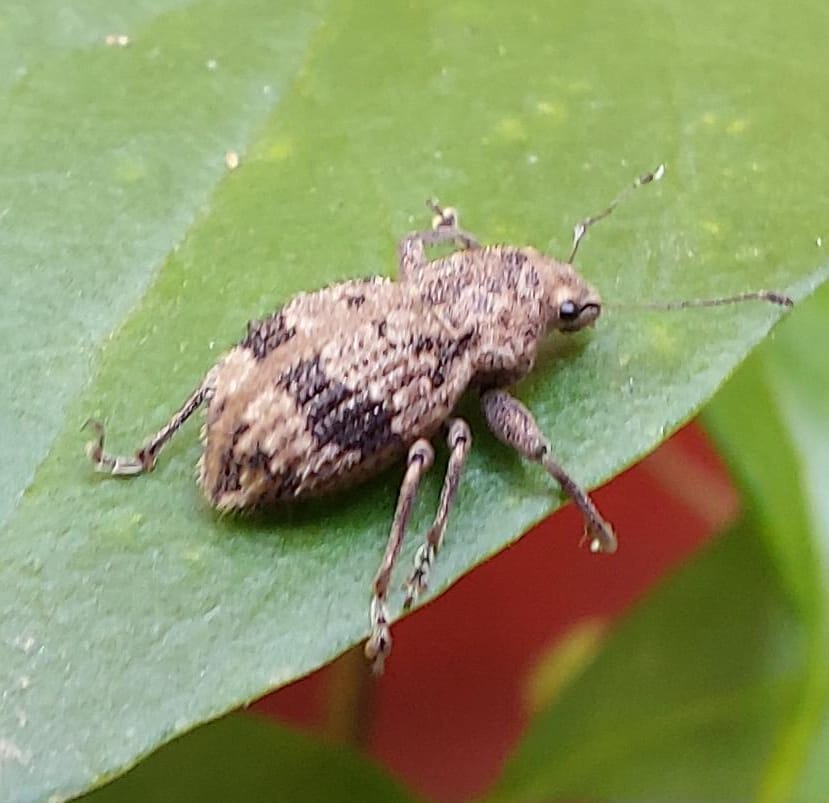
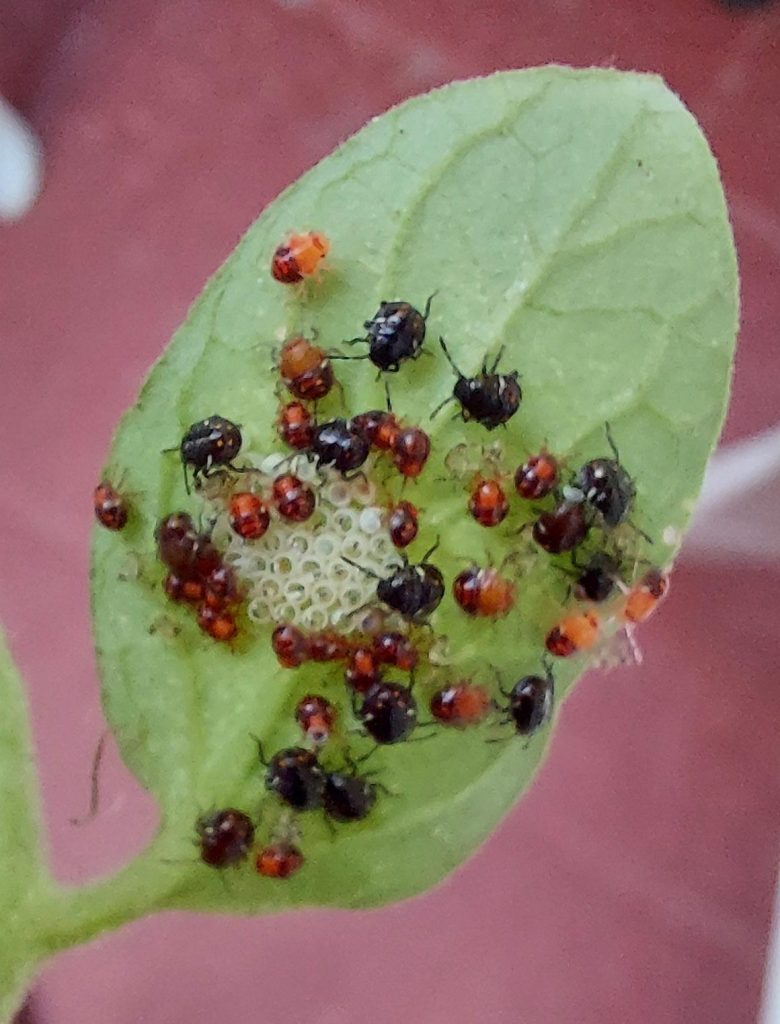
Bicho Moro y ninfas de Chinche Verde – (Autor: Patricio Devoto)
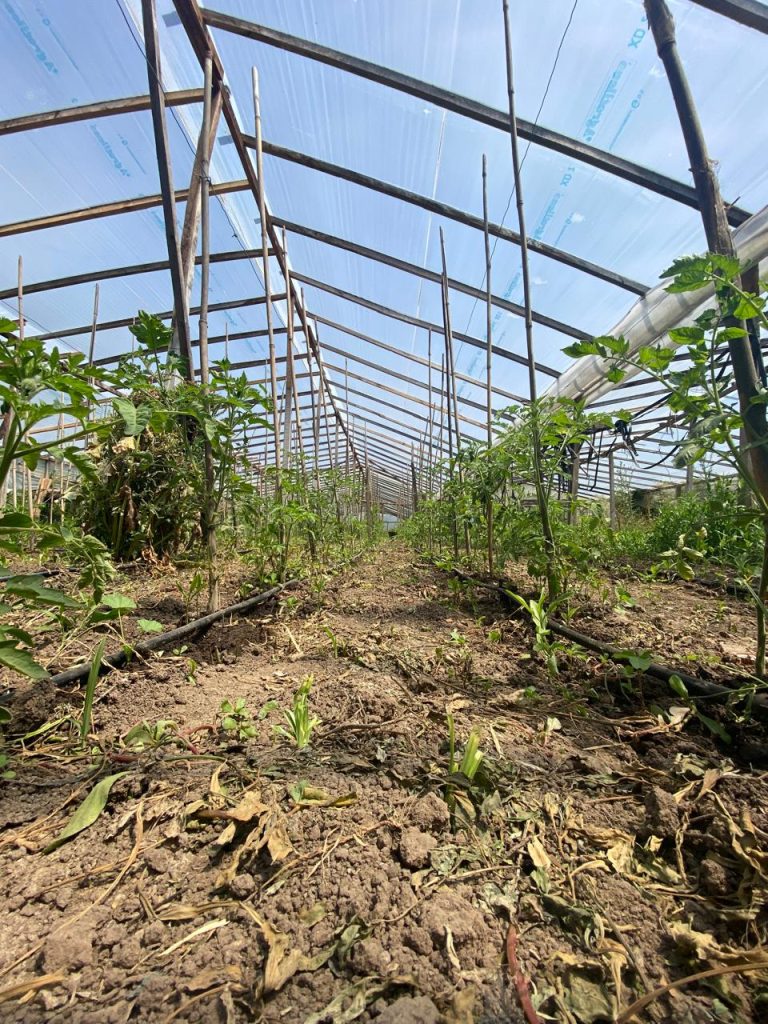
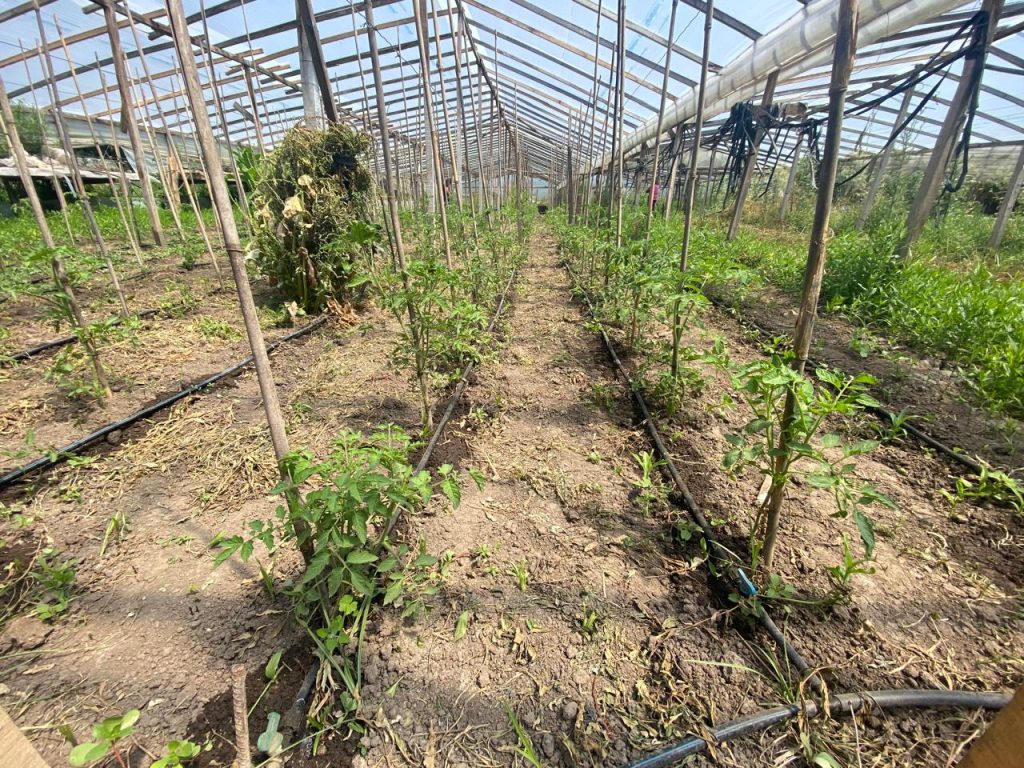
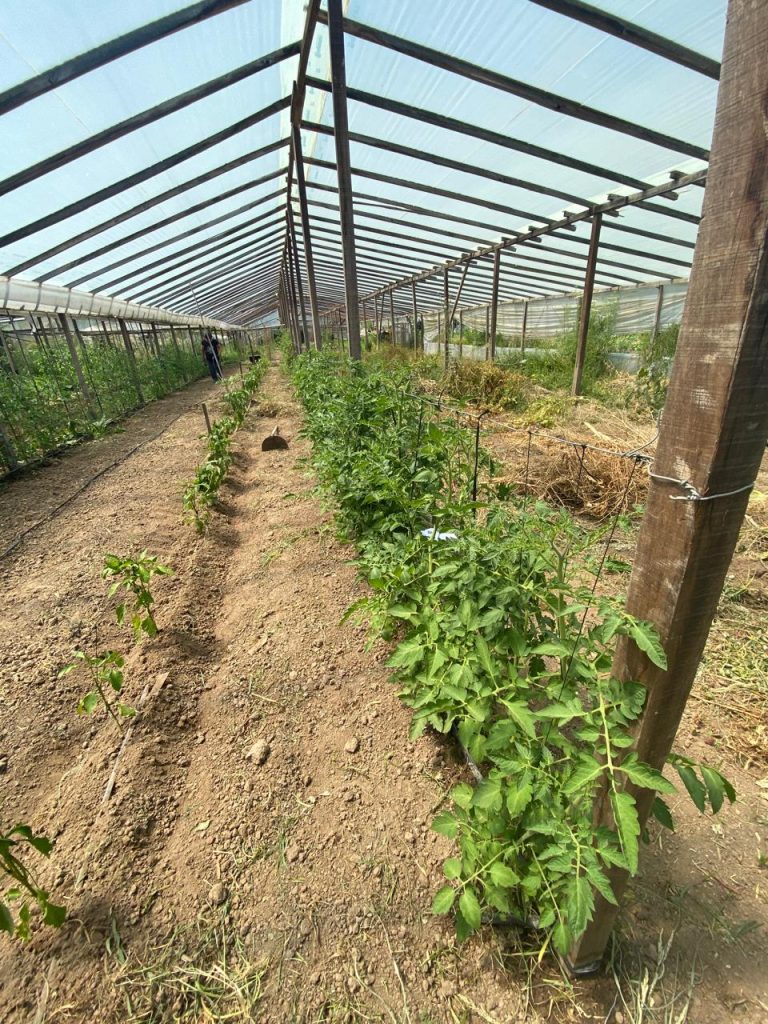
The heirloom tomato varieties from the 2023 collection are doing very well, with the Perita No. 67 and No Me Olvides varieties standing out for their plant development, the latter already in the fruiting stage.
In total, the number of plants successfully grown for each variety is: 5 plants of Perita No. 18, 6 plants of Perita No. 20, 4 plants of Perita No. 67, and 16 plants of No Me Olvides.
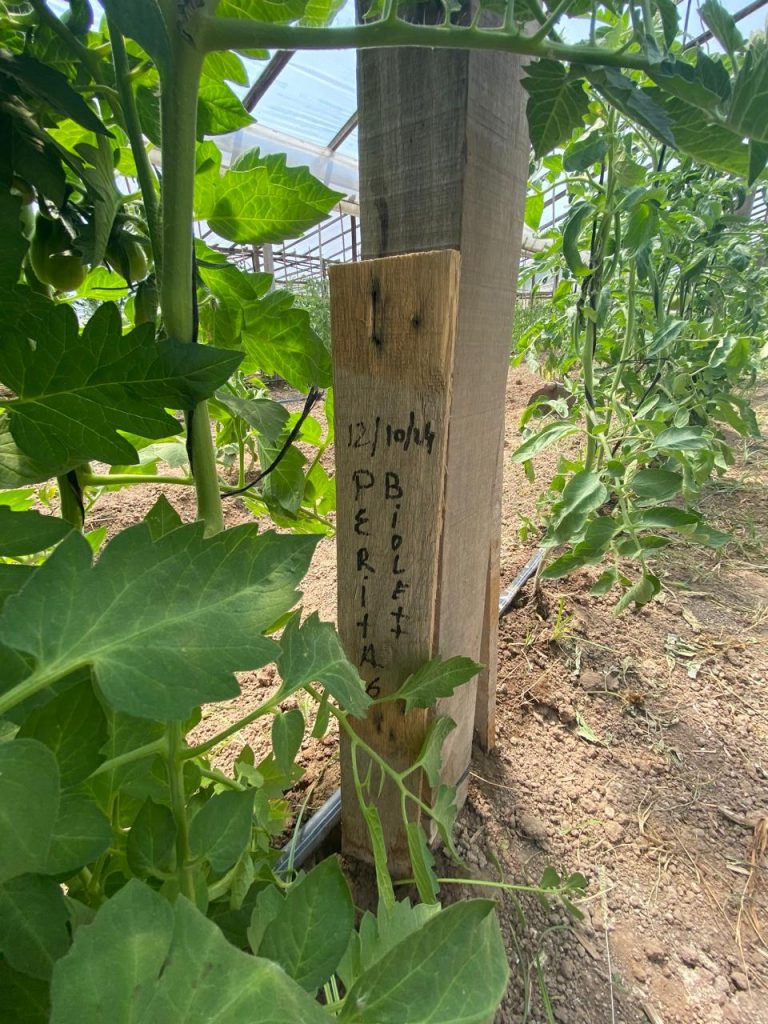
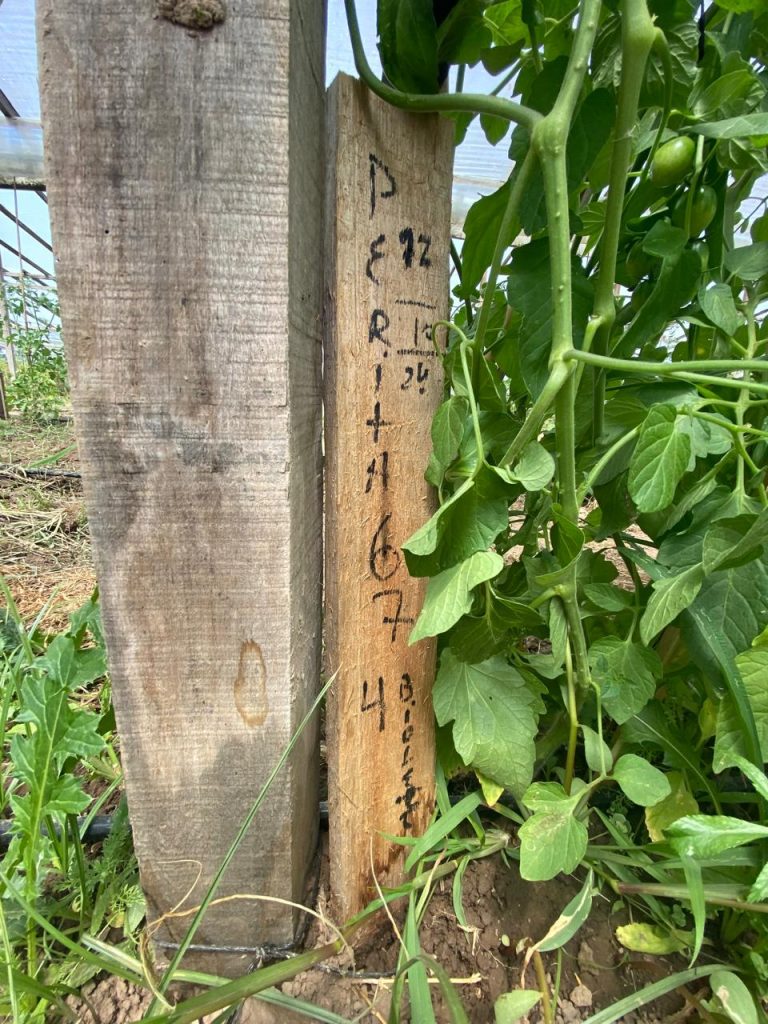
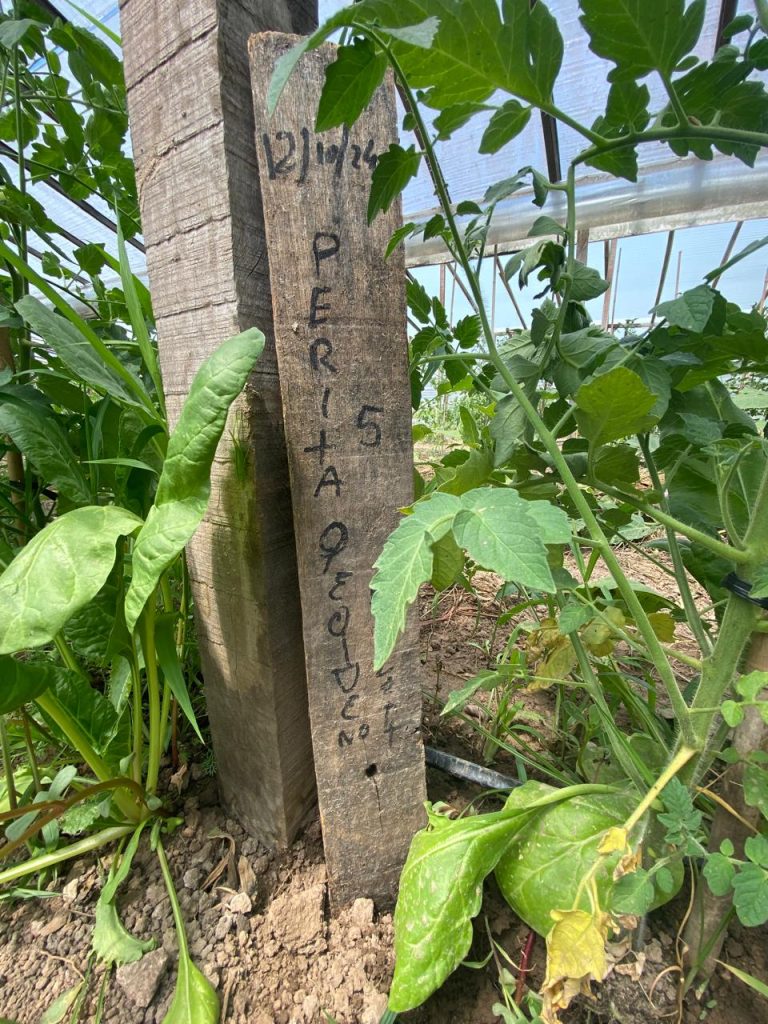
As for Julia’s own tomato varieties, they are also doing very well, with many already in the fruiting stage, such as the Green Tomato, Peach Tomato, Black Cherry, and some already being harvested, like the Red Egg Cherry.
With a total of 9 different varieties, the number of plants successfully grown for each variety is: 16 plants of Black Cherry; 15 plants of Green Tomato; 5 plants of Pata Negra Tomato; 14 plants of Red Egg Cherry Tomato; 10 plants of White Cherry Tomato; 4 plants of Feo de Tudela Tomato; 10 plants of Peach Tomato; 6 plants of Yellow Tomato; and 12 plants of Large White Tomato.
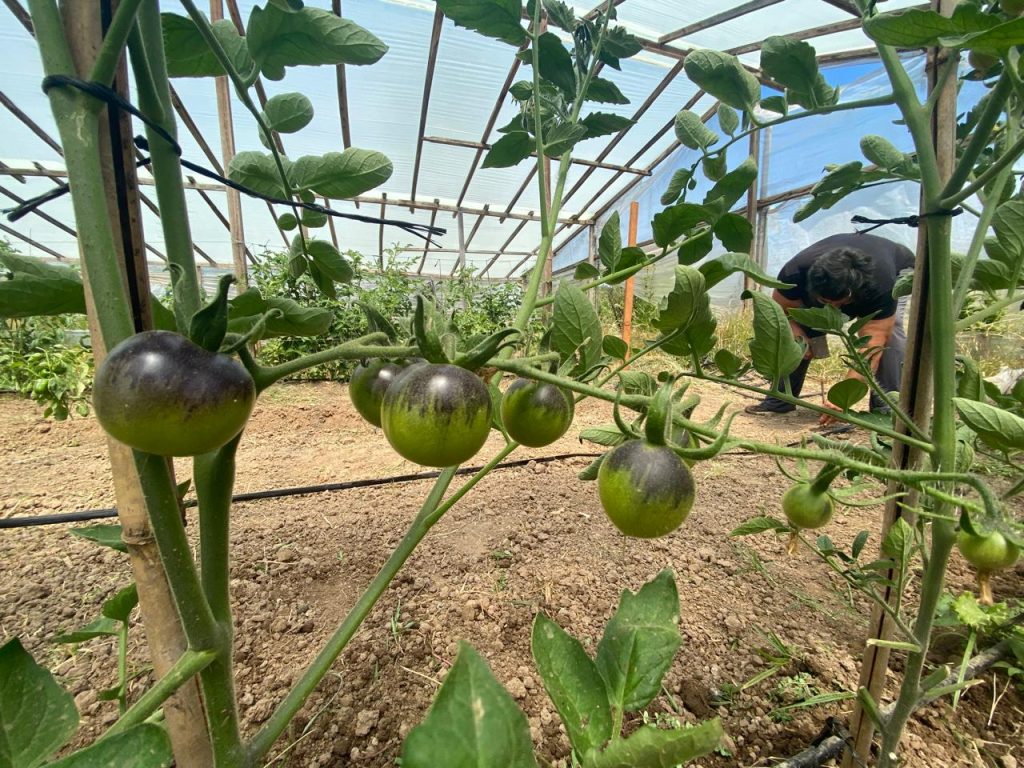
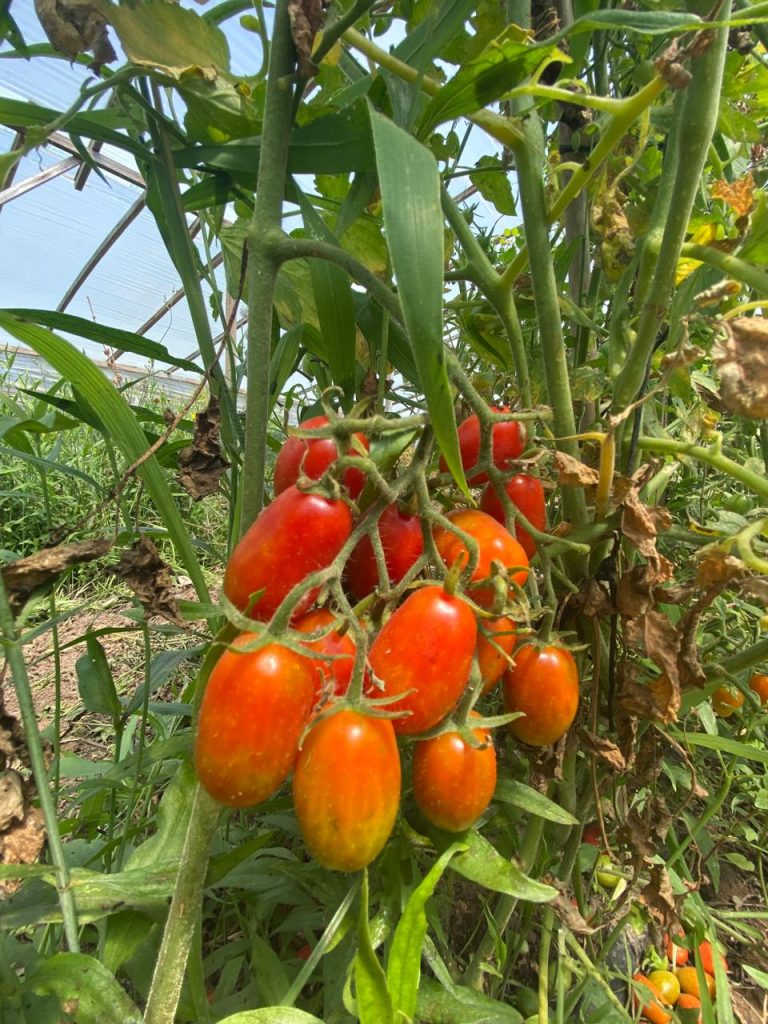
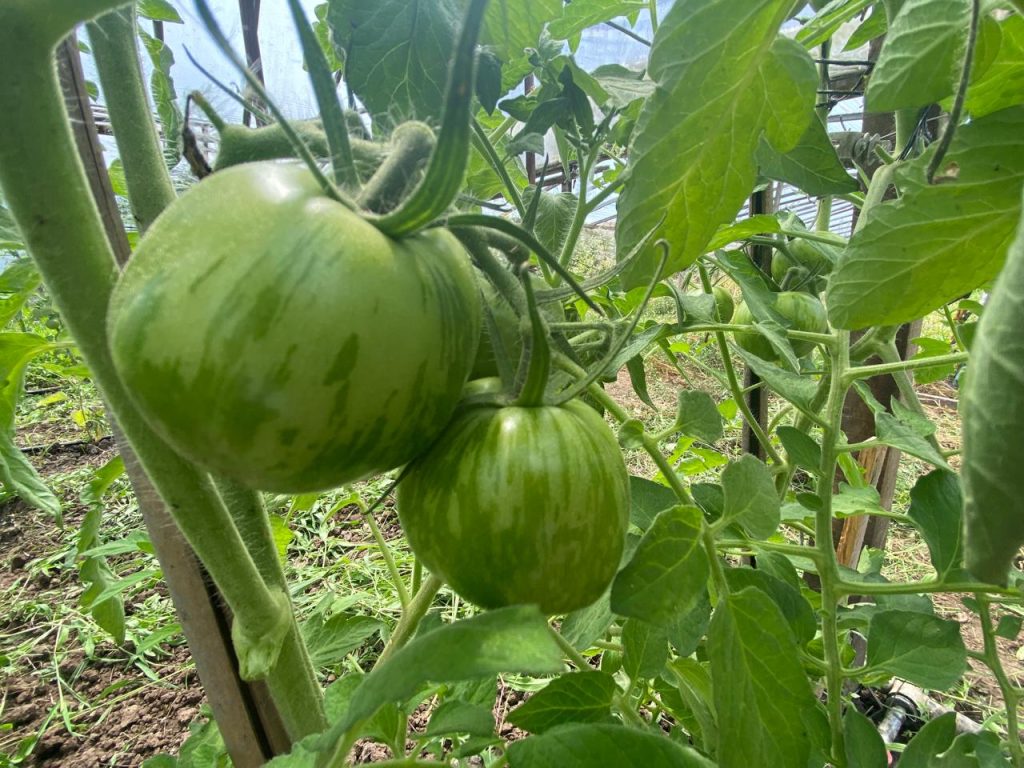
The second batch of heirloom tomatoes, part of the collaborative evaluation project “Rescuing the Heirloom Tomato”, and transplanted in early November (11/7), have been developing under optimal conditions.
It’s worth remembering that the 2024 collection for these varieties faced some difficulties during germination.
In total, the number of plants successfully grown for each variety is: 1 plant of La Piqui variety (one plant was lost after transplanting), 5 plants of Aimé variety, and 4 plants of No Me Olvides variety.
Additionally, Julia is evaluating 3 plants of the heirloom perita tomato variety “Ronita”.

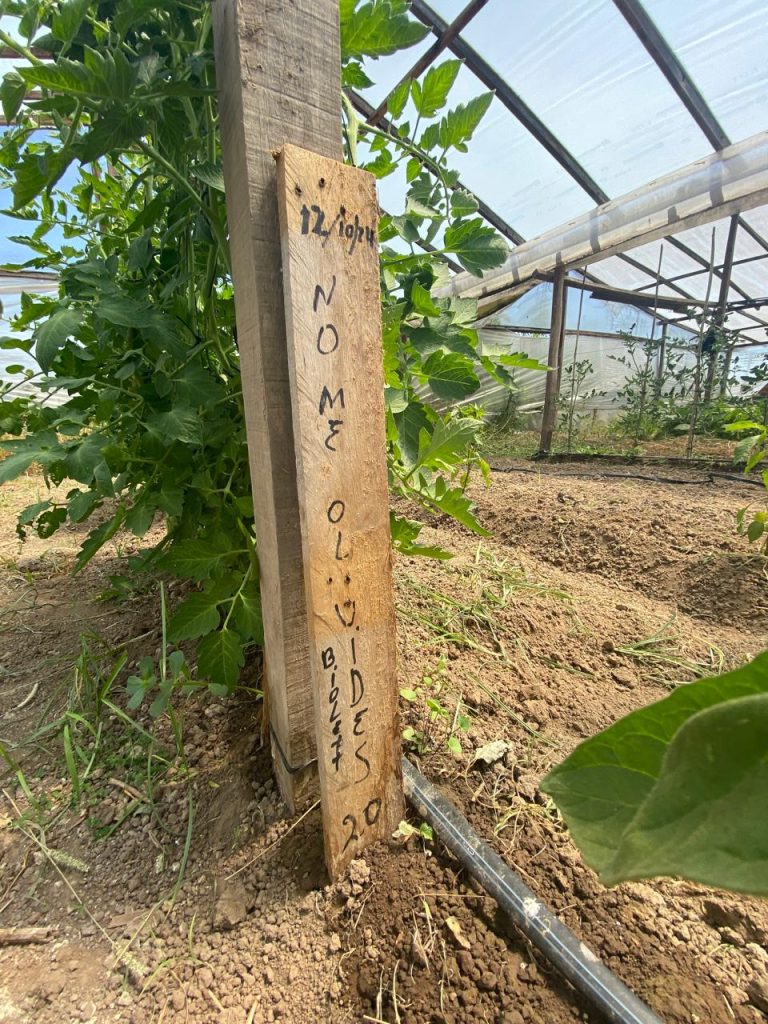
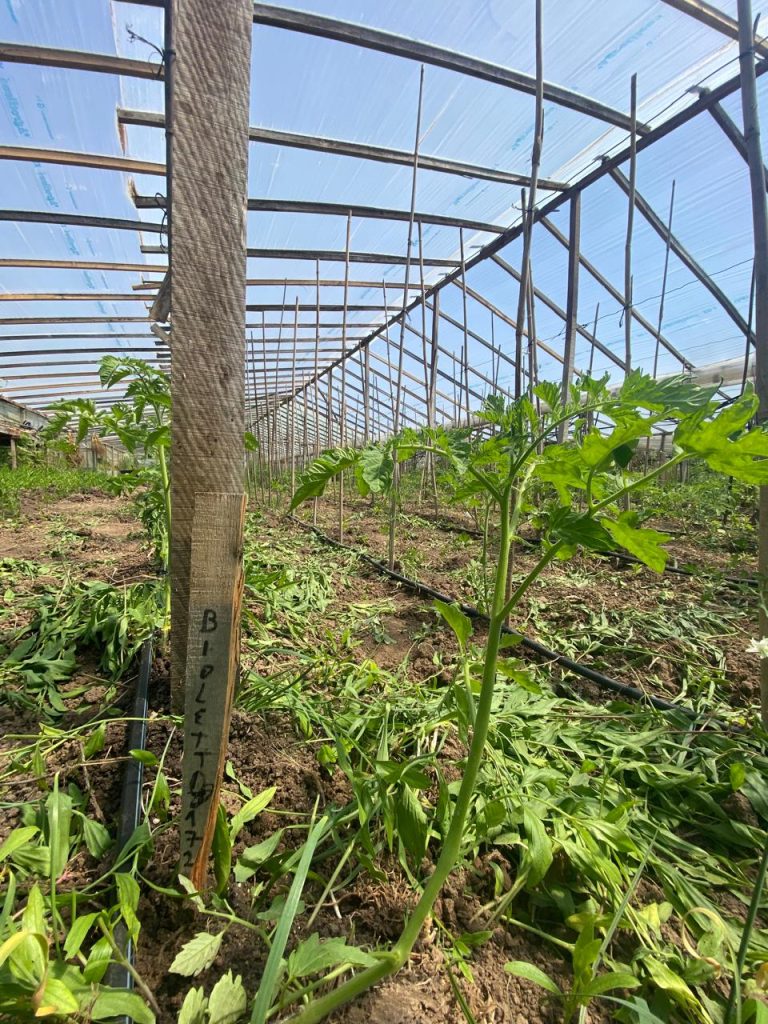
The visit continued at the nursery, where Julia keeps more tomato varieties that she exchanges at the market she attends every weekend with her vegetables, succulents, seedlings, and seeds.
She showed us some of the varieties: Lágrima de Oro Tomato, Reina de la Noche Tomato, and Black Beautiful Tomato.
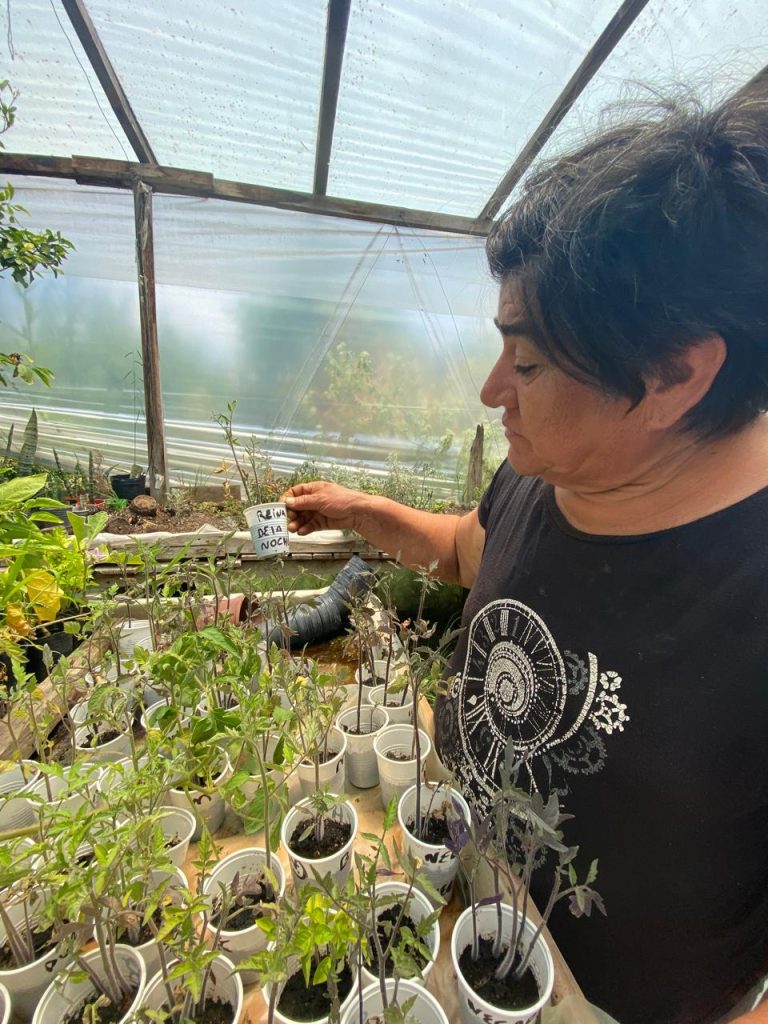
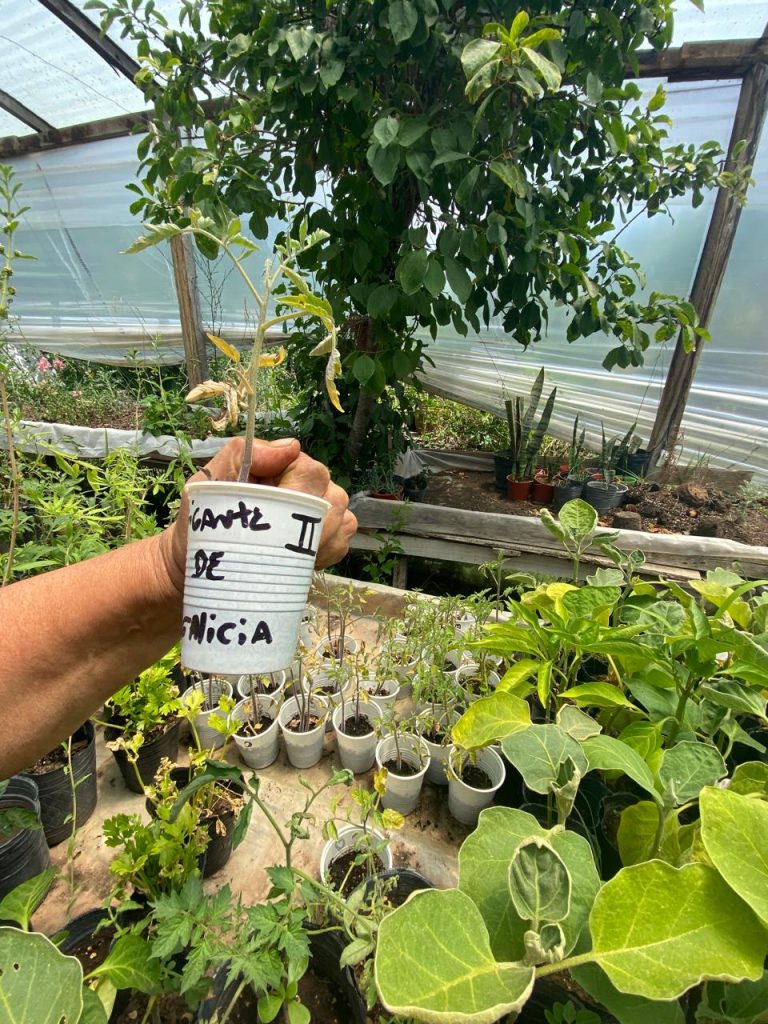
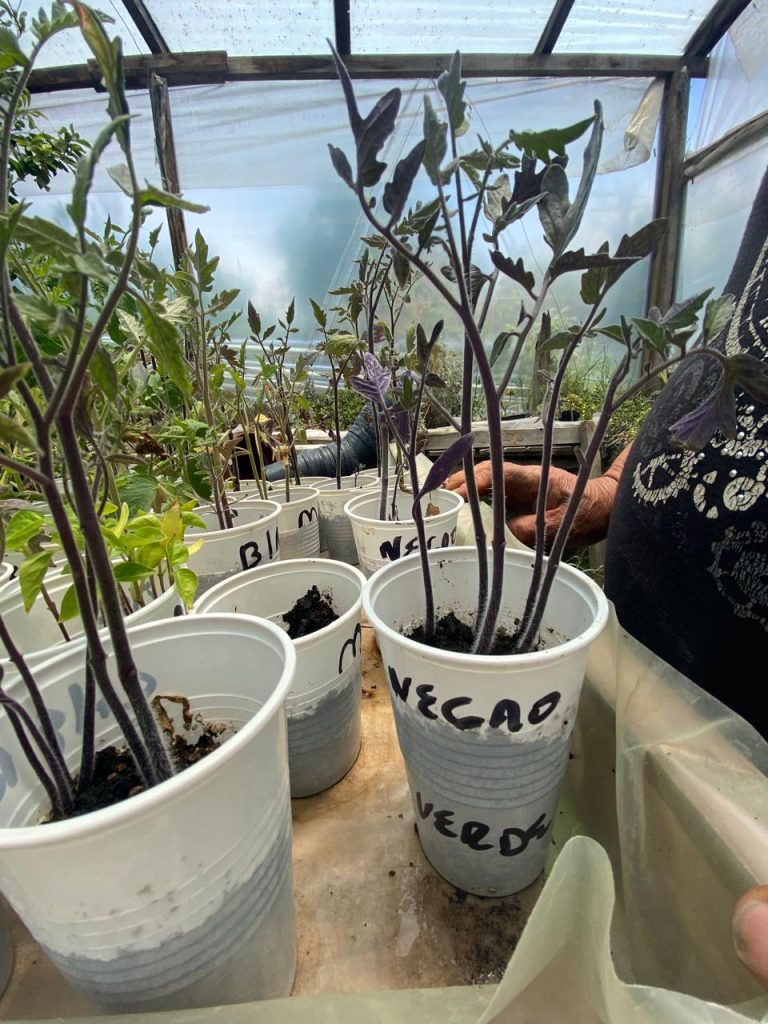
We thank Julia for welcoming us to her farm and for her commitment to participatory breeding.
If, like Julia, you’d like to take part in this and other projects, we invite you to contact us through our social media channels.